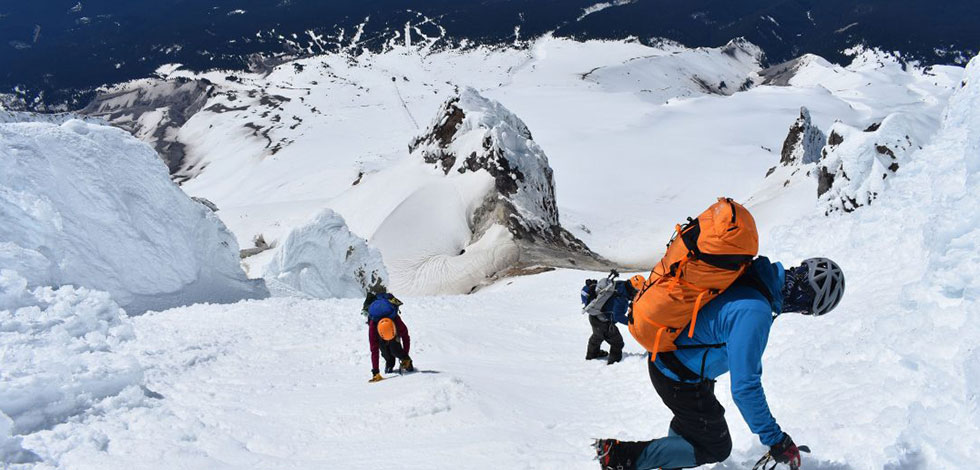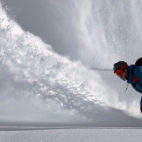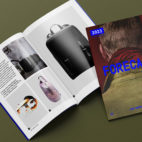Could Liquid Crystal Polymer Be the Next Evolution in Pack Cloth?
Throughout the series of outdoor trade shows earlier this year the usual flood of new gear lists were published. One item that consistently got people talking was a new pack from Arc’teryx: the AR 20. An understated climbing pack that does a great job of hiding some very cool new technical features.
Top of that list of features is a new pack cloth woven with an exotic Liquid Crystal Polymer ripstop grid, dubbed N315R LCP. The AR 20 is the first pack to utilize LCP technology and the fiber has the team at Arc’teryx excited. And when the fabric developers at Arc’teryx are excited it’s worth paying attention. So far, details on LCP have been hard to come by. If you’ve been following the story you might have read that LCP is super lightweight, super tough and that it took the team years to develop.
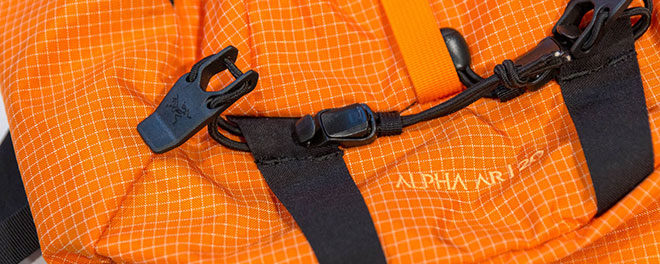
As usual, we wanted to know more. Thankfully senior designer Gord Rose was able to make time between adventures to brief us on the new fiber and to share the story of what it took to develop it into a fabric.
It only takes a few minutes talking with Gord to realize that Arc’teryx has a laser-like understanding of their purpose. The brand is self-described obsessive about pursuing the ultimate in outdoor endeavours. And pushing the boundaries of human endurance has always been intertwined with pushing the boundaries of equipment. As packs grow lighter people can travel further, faster. Therefore the holy grail for pack cloth has always been a super light fabric that will hold up in extreme conditions. Whilst innovation in pack construction comes thick and fast, significant fabric evolution requires significant investment in time and resources that few can afford. That’s why it’s impressive when brands like Arc’teryx take on the mission to go further and find a better way. For Gord, that has meant spending at least the past 10 years trying to find how to do better than Nylon. “It’s really tough and stands up to abuse, the challenge is to stop catastrophic tears in it when you reduce the weight down to the 210 denier range”.
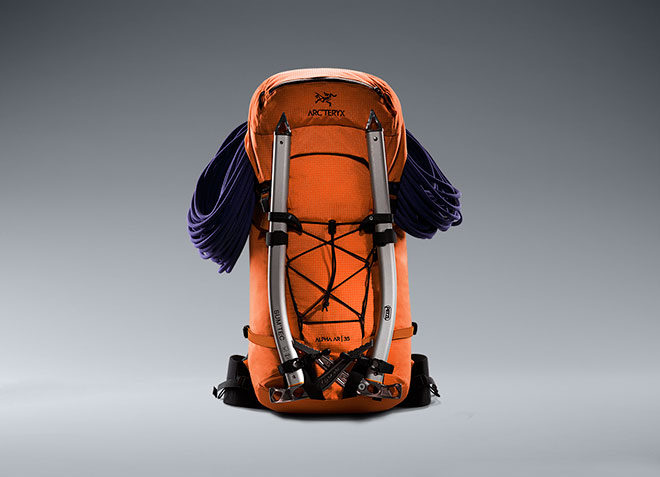
You might be thinking that there have been plenty of new fabrics to emerge in that time – such as X-Pac, Dyneema and Cuben Fiber. However, going through each of these with Gord illustrates how specific his requirements for the perfect cloth are. His process of elimination is summarised well by a quote from Anna Karenina that’s been used to describe natural evolution. “Happy families are all alike; every unhappy family is unhappy in its own way”. Essentially if a fabric has a deficiency in just one of an endless list of Gord’s requirements then it’s all over. The right fabric might not have anything special to offer – other than a lack of any deal-breaking traits.
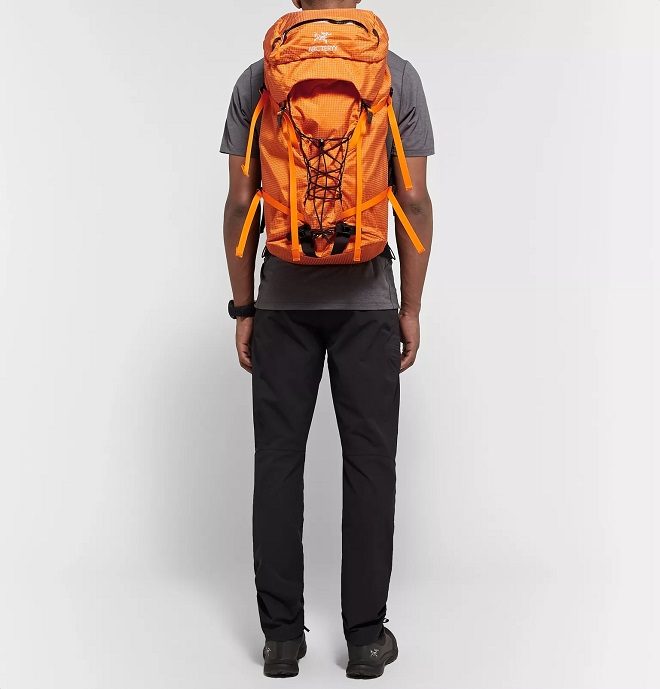
Take for example ripstop, which was an early approach to reduce weight and maintain strength. Gord explains how a small issue with the finish quickly snowballed, “A typical approach in the ’90s was to double up the Nylon yarns to create a ripstop, that made the fabric bumpy and reduced the effective density of the weave. That made it harder to coat, which meant you needed more coating. It flexed more and created leaks. It was kind of a vicious circle”. An evolution of ripstop then emerged that used UHMWPE fibers of an equal denier to smooth out the bumpy issue. UHMWPE fibers like Dyneema or Spectra were common choices; however, these also had flaws for Gord. “Both these yarns have a low melt point and everything we were doing at Arc’teryx relied on heat. Hot gluing, laminating and all of our AC2 technology. It’s a common problem with climbing gear that you need to be careful about heat. These processes can all cause damage to the Spectra.”
Later, when a colleague of Gord’s joined Dimension-Polyant to work on their pack cloth offering, the next wave of super light materials began to hit the market. These were laminated sailcloth-style materials like X-Pac or Cuben Fiber. Here’s Gord’s take, “They all kind of missed what I was looking for. They gave really good dimensional stability and good overall tear strength, but they didn’t give very good toughness. They tend to crease on the corners which creates high wear points.”
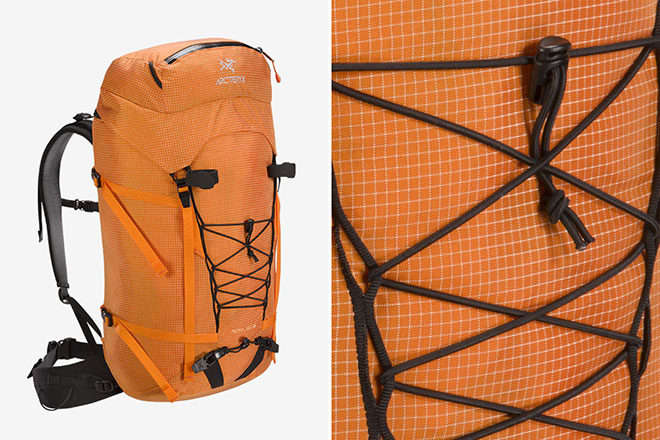
It was during this era of development that Gord first encountered LCP fiber and saw the potential. The technology has actually been around since the 1970s; Kevlar is one early commercialized iteration of LCP. Through the small circle of people and companies who work at the leading edge of technical fabric innovation, Gord was introduced to the LCP fiber Vectran. It was being used in aerospace applications, and Gord was able to obtain yarn to test. The results were promising. LCPs are known to have great strength properties combined with better heat resistance than nylon. Plus it’s resistant to cold, weather and chemicals. But whilst it had potential there was still a deal breaker, this time it was logistics. “Vectran was not very common. There was only one supplier and it was really hard to get supply. Plus all of the people who could potentially weave it for us were affiliated with competitors. And it was staggeringly expensive.”
It was much later, well after moving on from the idea of using LCP fibers, that a breakthrough came. Gord was working on developing the balloon fabric for the Arc’teryx avalanche pack and had formed a relationship with an “extremely good” fabric weaver in Korea who was excellent at working with high tenacity yarns. At the end of the project, Gord says “they kinda just asked if we had anything else on our R&D wishlist. I brought up the LCP nylon blend but was also like – that’s unobtainable.” As it turned out, things had changed. The Korean mill not only had a really good supply chain for Liquid Crystal Polymer, they were also willing to go into partnership with Arc’teryx to commercialize it. Thus began two years or more of work, to turn Gord’s concept into the dream Arc’teryx fabric.
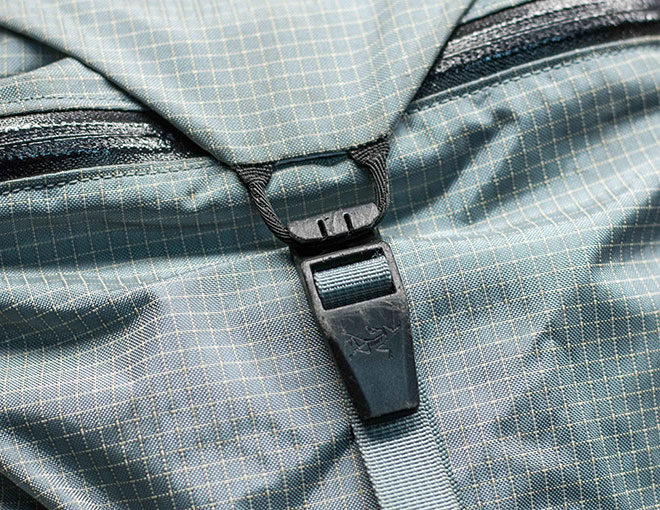
The reality was that LCP yarn is difficult to weave. The fibers are super fine and tend to get snagged in the machinery. The upside of which is a super soft hand feel. On top of that blending LCP with nylon opened up even more problems. The LCP has opposing characteristics to the nylon such as a much lower amount of stretch. But the team pushed on. “We worked with the mill for a couple of years just playing with different levels of twists in both the LCP and the Nylon yarns, and different rip patterns. Just trying to balance different deniers.” As a bonus, by going through the experimentation process Gord and the mill ended up creating a whole palette of LCP fabrics that they plan to utilize. So the N315R LCP used on the AR 20 is just the first of these we get to see. “We wanted this pack line to be just super, super tough. So instead of going with one of the really light weaves, we went with a 315D nylon 6.6 combined with a 400D LCP in a very tight grid.” According to Gord the result is “just ridiculously high resistance to wear and tear.” The fabric coats really well and the slightly raised surface acts as a buffer against abrasion. After field testing, the design team are thinking it has the potential to be used in applications that would normally need fabric twice the weight.
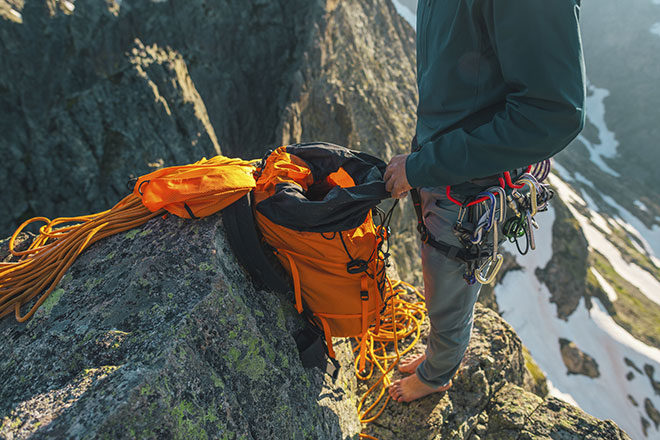
Mike Parsons’ book Invisible on Everest from 2003 was the first time I noticed the link between advances in equipment and advances in mountaineering. Hearing about the Arc’teryx LCP journey, it’s easy to see the uncanny similarities between the two endeavours. It’s not just that they share the same goal of climbing the highest. Both require a rock solid sense of purpose and perseverance when most people would doubt themselves. Right now it’s an exciting time for the guys, they’re at the top of the mountain and can see all sorts of possibilities. Gord’s already planning the next steps for LCP. “We want to build a new platform of fabrics that work across all the different categories, everything from lightweight running packs to crag packs. As well as AC2 and taped construction. The fundamentals of the fabric allow us to do all of those things.”
For Arc’teryx the next few years will be spent exploring all these new opportunities. If they’re successful we’ll probably see a few competitor LCP fabrics hit the market. Then there’s a possibility that if supply grows and cost drops, LCP might even become commonly available to the wider outdoor industry. For the rest of us, it’s exciting that Gord’s hard work could be the start of a new era of fabrics to play with. But I can’t help but think forward to the daunting reality of Arcteryx’s mission for evolution. And again it’s the same question that gets asked when mountaineers have just climbed Everest. What are they going to do after this?
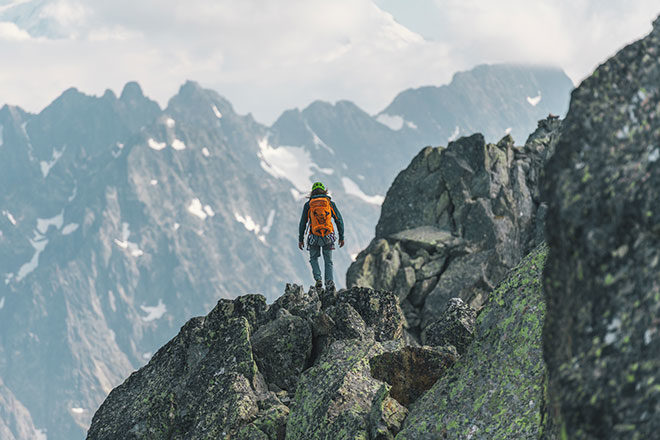
Liked this article? You might dig these too:
QWSTION: Is Bananatex the Next Miracle Backpack Fabric?
Dyneema vs X-Pac: Ultralight Fabrics





 Carry Awards
Carry Awards Insights
Insights Liking
Liking Projects
Projects Interviews
Interviews
